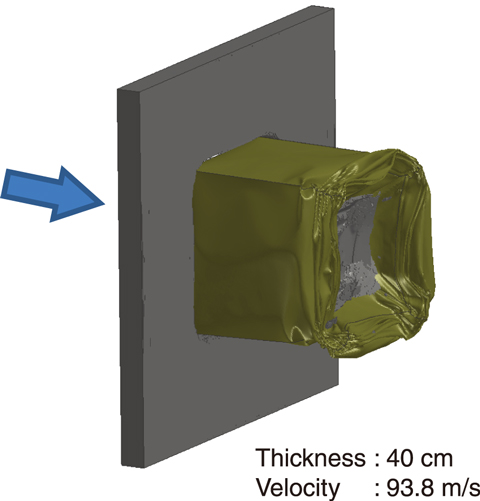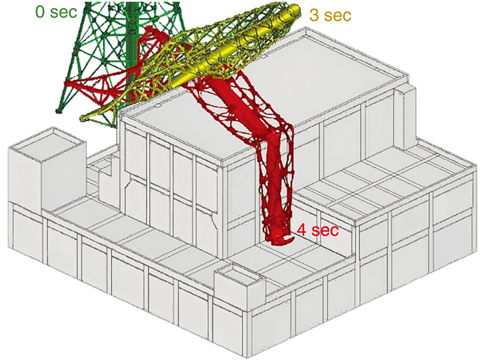
Fig.6-17 Obtaining physical properties of reinforced concrete by collision analysis

Fig.6-18 Collision between stack and reactor building
After the accident at the TEPCO’s Fukushima Daiichi NPS due to the Great East Japan Earthquake, the safety of the reactor in the event of a tornado has become important as part of measures against natural disasters. The integrity evaluation of the reactor building has been limited to evaluating whether a simple flying object caused by a tornado could penetrate the wall. However, complicated structures such as exhaust stacks surround the reactor building. This study therefore constructed a 3D model of an exhaust stack using a commercial program that is used in the collision analysis of cars and aircrafts. The collision behavior when the exhaust stack crashes into the reactor building was also investigated.
When conducting collision analysis, it is necessary to set the physical properties of reinforced concrete of the reactor building. Since the physical properties of reinforced concrete are difficult to obtain owing to the use of reinforcing steel, they were retrieved by referring to the empirical formula obtained from experiments by the Nuclear Regulation Authority. A collision analysis between flying objects and reinforced concrete plate was then performed, as shown in Fig.6-17. The flying objects studied included a container 2.4 m in length, 2.6 m wide, and 6.0 m in depth, and a steel plate 4.0 mm thick and weighing 2300 kg. The physical properties of reinforced concrete were then estimated using these collision analyses. As a result, if the compressive fracture strain and tensile fracture strain were set to 0.03 and 0.087, respectively, the result of the empirical formula could be reproduced. Additionally, the analysis results were confirmed to have a similar conservativeness as the empirical formula.
To simulate the collapse of the exhaust stack, three of the stack’s steel legs on the opposite side of the reactor building were not fixed. The exhaust stack was assumed to have collapsed due to a strong wind with a wind speed of approximately 100 m/s. The resulting collision behavior when the stack falls toward the roof of the reactor building is shown in Fig.6-18. The exhaust stack started tilting 3 seconds after the wind blew; it then collided with the reactor building at 4 seconds from the start of the wind blew. The results showed that the exhaust stack was significantly damaged after the collision, but the reactor building was not deformed and therefore the internal facilities were not affected. This is because the exhaust stack is more easily deformed than is the reactor building. The kinetic energy of the exhaust stack, rather than being converted into the strain energy of the reactor building, was mostly converted into its own strain energy.
In conclusion, collision simulations between the exhaust stack and the HTTR reactor building were performed by developing a 3D model representing the complicated shape of the exhaust stack. As a result, the integrity of the reactor building in the event of a tornado was confirmed.
(Masato Ono)
<Previous: 6-6 | Next: 7 Research and Development of Fast Reactors>